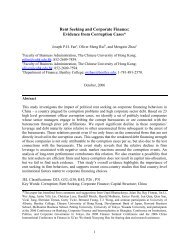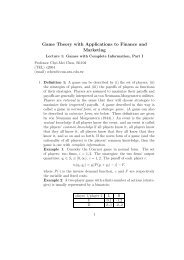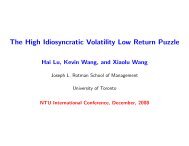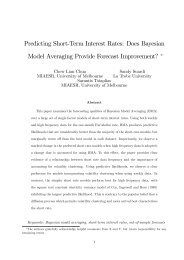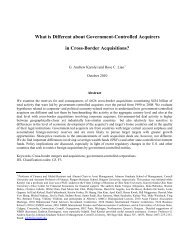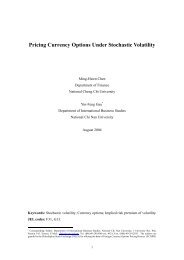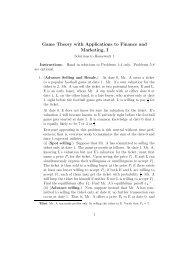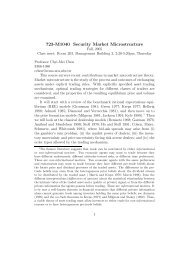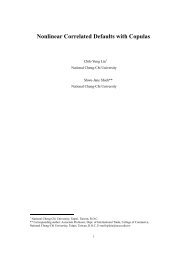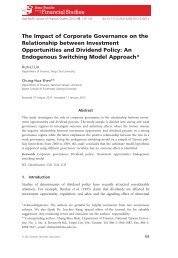Game Theory with Applications to Finance and Marketing
Game Theory with Applications to Finance and Marketing
Game Theory with Applications to Finance and Marketing
Create successful ePaper yourself
Turn your PDF publications into a flip-book with our unique Google optimized e-Paper software.
A similar reasoning applies <strong>to</strong> σ 2 (L). Hence (U,L) is the unique proper<br />
equilibrium of this strategic game.<br />
5. Myerson also proves that any finite strategic game has a proper equilibrium,<br />
<strong>and</strong> hence any finite game has a trembling-h<strong>and</strong> perfect equilibrium<br />
<strong>and</strong> an NE. Let us sketch Myerson’s proof. Note that it suffices <strong>to</strong><br />
show that for any ɛ k ∈ (0, 1), an ɛ k -proper equilibrium σ k exists, since<br />
by the compactness of Σ, a convergent subsequence of {σ k ; k ∈ Z + }<br />
exists. Thus fix any ɛ ∈ (0, 1). Define<br />
m ≡ max{#(S i ); i = 1, 2, · · · , I},<br />
where recall that #(A) is the cardinality of set A (the number of elements<br />
of A). Define d ≡ ɛm . For all i = 1, 2, · · · , I, define<br />
m<br />
Σ d i ≡ {σ i ∈ Σ i : σ i (s i ) ≥ d, ∀s i ∈ S i }.<br />
Note that Σ d i is a non-empty compact subset of Σ 0 i . Define<br />
Σ d ≡ Π I i=1 Σd i .<br />
For all i = 1, 2, · · · , I, consider the correspondence F i : Σ d → Σ d i defined<br />
by<br />
F i (σ) = {σ i ∈ Σ d i : u i (s i , σ −i ) < u i (s ′ i, σ −i ) ⇒ σ i (s i ) ≤ ɛσ i (s ′ i), ∀s i , s ′ i ∈ S i }.<br />
Note that given each σ ∈ Σ d , F i (σ) is convex <strong>and</strong> closed. We claim<br />
that F i (σ) is also non-empty. To see this, for each s i ∈ S i , define ρ(s i )<br />
<strong>to</strong> be the number of pure strategies s ′ i ∈ S i <strong>with</strong><br />
Define<br />
σ ′ i(s i ) ≡<br />
u i (s i , σ −i ) < u i (s ′ i , σ −i).<br />
ɛ ρ(s i)<br />
∑<br />
s ′′<br />
i ∈S i ɛρ(s′′<br />
i ) , ∀s i ∈ S i .<br />
By construction, we have σ ′ i (s i) ≥ d, <strong>and</strong> ∑ s i ∈S i<br />
σ ′ i (s i) = 1. Moreover,<br />
it can be verified that σ ′ i ∈ F i (σ), showing that F i (σ) is indeed nonempty.<br />
Finally, one can verify that F i is upper hemi-continuous. Define<br />
F ≡ Π I i=1F i : Σ d → Σ d .<br />
5



